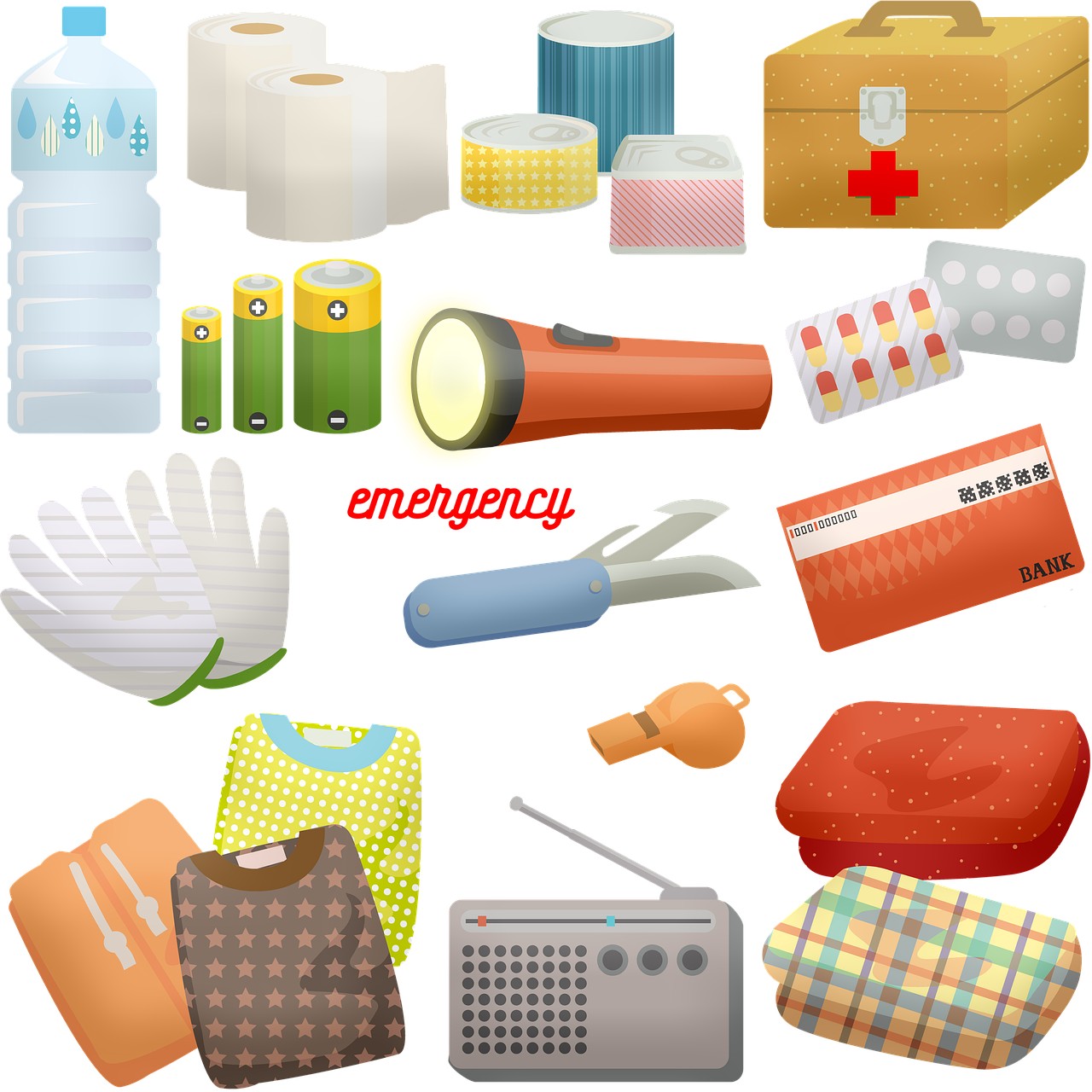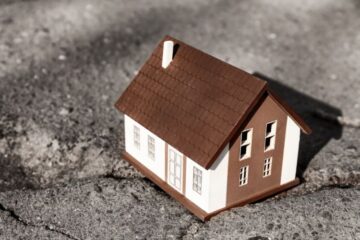Basic Disaster Supplies Kit

A disaster supplies kit should include all of the necessities for surviving for at least 72 hours following a disaster. During a disaster, take your gear with you wherever you go, whether it’s to a safe place in your home or a hotel thousands of miles away. Online at www.redcross.org, ready-made kits are available. Include the following supplies, as recommended by www.fema.gov, if you wish to create your own kit:
- Food
- Water
- First aid kit
- Clothing, bedding, and sanitary items are all needed.
- Tools
- Unique objects (described in the following sections)
Water
Local water supplies are frequently disrupted by disasters. Set aside a three-day supply of water in case you become stranded: one gallon of water per family member every day. Consider your family’s particular needs: youngsters, the elderly, and persons with medical conditions all require more water than the average person.
The simplest and safest alternative is commercially bottled water; keep it sealed and check the expiration date. If you want to bottle and store your own water, follow these steps:
- Use a food-grade bottle from an outdoor supply store, such as a Nalgene® bottle. Before using it, clean it with soap and water. Use a plastic soda bottle instead (never use a container that previously held milk or juice). After cleaning the bottle with soap and water, disinfect it with a bleach and water solution (1 teaspoon bleach per 1 quart water). Rinse off the solution after swishing it around to make sure it reaches all of the surfaces.
- Fill the bottle halfway with water from the tap. If the water comes from a well, fill the bottle with two drops of unscented liquid household chlorine bleach.
- On the bottle, write the date.
- Every six months, replace the bottle.
Food
Gather a three-day supply of food, keeping in mind your family’s eating patterns and dietary requirements. It is suggested that you eat the following foods:
- Canned meats, fruits, and vegetables are examples of ready-to-eat foods.
- Canned liquids: juice, milk, soup, etc.
- Sugar, salt, and pepper are essential ingredients.
- Granola bars, peanut butter, crackers, and trail mix are all high-energy snacks.
- Cookies, hard candy, and instant coffee are all comfort foods.
- Canned infant formula, low-sodium meals, and other foods for those with special requirements.
Don’t include food that:
- Refrigeration is required.
- Cooking takes a long time.
- Cooking necessitates a large amount of water.
- You’ll be thirsty.
First Aid Kit
In your first-aid kit, keep the following items:
- Assorted sizes of sterile adhesive bandages
- sterile gauze pads in various sizes (8–12)
- three “roller bandages that are sterile
- 1 yard x 5 yards “textile tape with glue
- Pain treatments with aspirin and without aspirin
- Packets of antibiotic ointment
- Scissors
- Tweezers
- Thermometer
- latex gloves (two sets)
- Sunscreen
- Medication to treat diarrhoea
- Ipecac syrup is used to induce vomiting in those who have been poisoned (contact poison control before use)
- A simple first-aid guide (can be obtained from your local Red Cross chapter)
Clothing, bedding, and hygiene products
Each person will require at least one complete change of clothing and footwear. If you live in a chilly climate, extra-warm gear is essential.
Clothing and Bedding
- Jacket
- Long-sleeve shirt
- Long pants
- Work boots or sturdy shoes
- Scarf, hat, and gloves
- Wet weather gear
- Underwear that keeps you warm
- Blankets and sleeping bags are required.
- Sunglasses
Sanitary Provisions
- a roll of toilet paper
- Soap
- Hygiene products for women
- Items for personal hygiene
- Garbage bags made of plastic
- Bucket made of plastic with a tight lid
- Disinfectant
- Liquid chlorine bleach for the home that is unscented
Tools
Extra supplies that will aid your ability to perform in an emergency include:
- a fire extinguisher of the ABC type
- Extra batteries for the flashlight
- Radio and/or television that is battery-operated and portable
- Extra batteries
- A can opener and a utility knife are included in the package.
- Paper plates and plastic utensils or mess kits
- Pliers
- Tape
- Tent in a tube
- Compass
- Foil made of aluminum
- Containers made of plastic for storage
- a warning flare
- Pencils and paper
- Thread and needles
- Dropper for medicine (particularly useful for treating water with bleach)
- Wrench for turning off the lights (for turning off gas and water)
- Whistle
- Sheets of plastic
- A map of the surrounding area
Special Items
Keep the following miscellaneous objects in a secure and easy-to-reach location:
Family Records of Importance
- Certificates of Birth
- Cards for Social Security
- Passports
- Licenses to drive
- Other ways of identifying yourself
- Numbers of bank accounts
- Credit card numbers
- Certificates of insurance
- Household goods inventory
Baby-related items
- Formula
- Diapers
- Bottles
- Pacifiers
- Milk in powdered form
- Medications
Items for the Elderly or Sick
- Medications on prescription
- Denture needs
- Extra batteries and hearing aids
Miscellaneous Items
- Cash
- Solution for contact lenses
- Games
Keeping and Organizing Your Disaster Preparedness Kit
Keep your emergency supplies kit in a cool, dry area in a backpack, duffle bag, or plastic container that is easy to carry. Kits should be kept in three places:
- Include all of the necessary supplies at home.
- Food, water, and roadside emergency supplies such as jumper cables, flares, and tire patch kits should all be included in the car.
- Food, drink, and appropriate walking shoes should all be included in your work bag.
Maintain your kit by doing the following:
- All containers should be dated and labeled.
- All supplies should be kept in airtight plastic bags.
- Every six months, replace all water and food.
- Any cans that appear dented, bloated, or corroded should be discarded.


